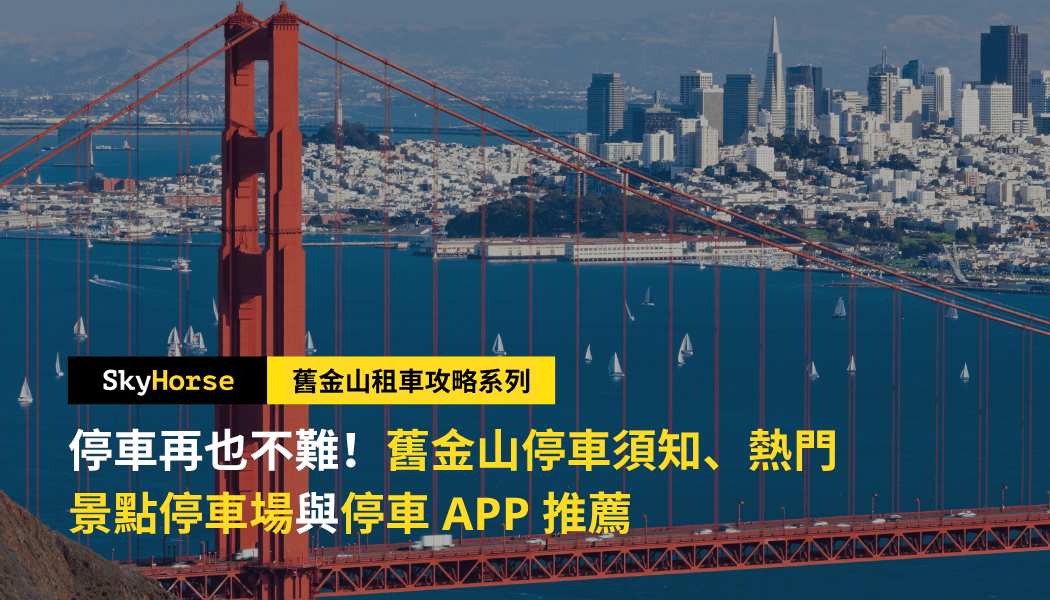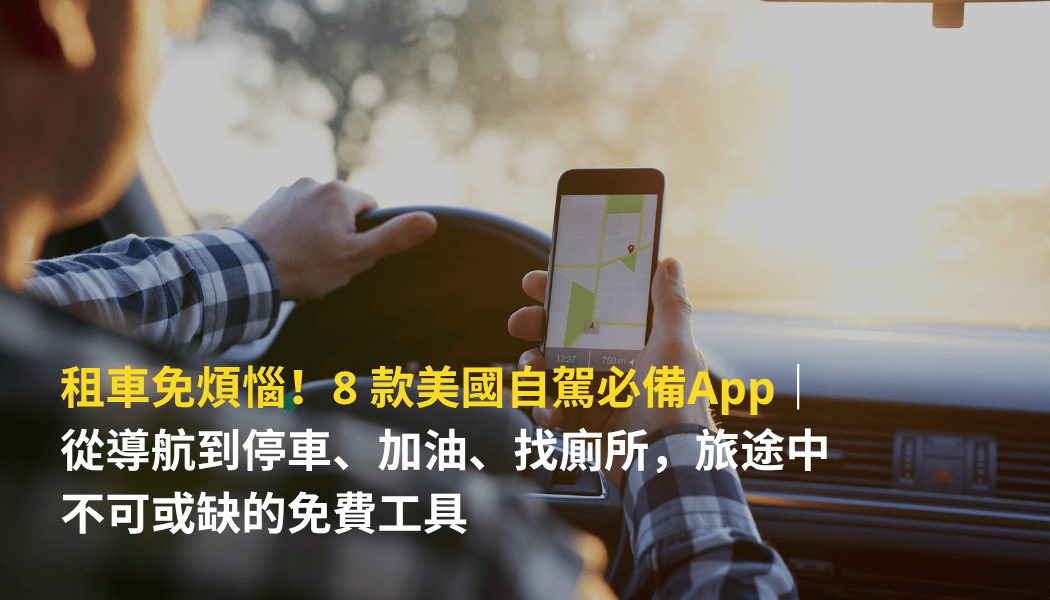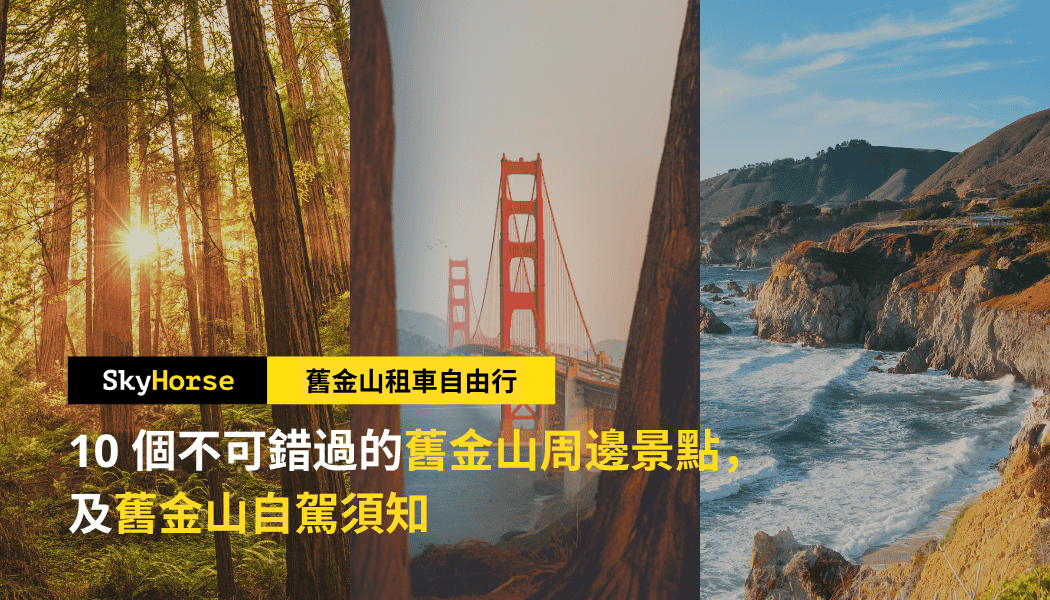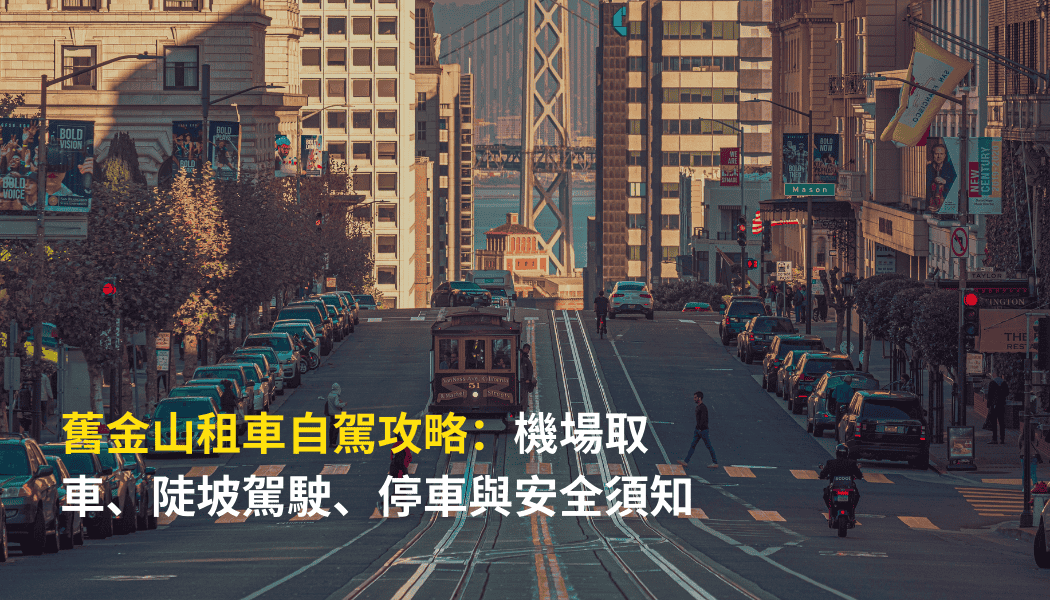
San Francisco is a city of culture, history, and modern technology. With famous attractions like the Golden Gate Bridge, Devil's Island, and Fisherman's Wharf, San Francisco is home to major technology giants that are leading the global digital wave, making it an important destination for many people traveling to California for sightseeing or business. If you're just moving around downtown San Francisco, many visitors choose to take public transportation; however, if you don't want to walk uphill all day, are planning to visit attractions on the outskirts of the city, or need to visit most of the tech companies that aren't located in the downtown area, renting a car and driving in San Francisco is a much better option for you.
San Francisco's unique terrain, dense traffic conditions, and strict parking rules may make it a bit of a challenge for travelers unfamiliar with U.S. driving habits, so we've put together a comprehensive guide to renting a car and driving in San Francisco in this article, starting with picking up your car at the airport, providing you with tips on driving on steep slopes, parking advice, traffic rules, and sharing the safety guidelines for driving in San Francisco, which I believe will definitely help you to drive, travel, or travel smoothly in San Francisco! We believe that after reading this guide, you will be able to drive in San Francisco, travel, and go on business trips without any problems!
Worried that driving in San Francisco is dangerous or that you might inadvertently break a traffic law?
This article will provide you with the following in full:
- Where should I find a rental car company to pick up my car from the airport? Is it convenient to drive to the city?
- How is it safer to drive and park on the high and steep slopes of San Francisco?
- What are some of the traffic rules, or parking regulations in San Francisco that I should be especially aware of?
- What areas should I avoid or what safety precautions should I take when driving in San Francisco?
San Francisco Car Rental|Airport Pickup
If it's from San FranciscoAirport Car RentalUpon arrival at San Francisco International Airport (SFO), all car rental agencies are located at the Rental Car Center, which is accessible by AirTrain Blue. Most of the car rental agencies have their counters on the fourth floor, a few on the first floor, and a few do not have a location in the Rental Car Center, so you can consider your own needs and convenience before choosing a car rental agency.
Warm reminder: If you choose to rent a car from Sky Horse, you can pick up your baggage outside the terminal, so you don't need to carry your bags to the rental center, and you don't need to queue up to do the formalities and leave the parking tower.
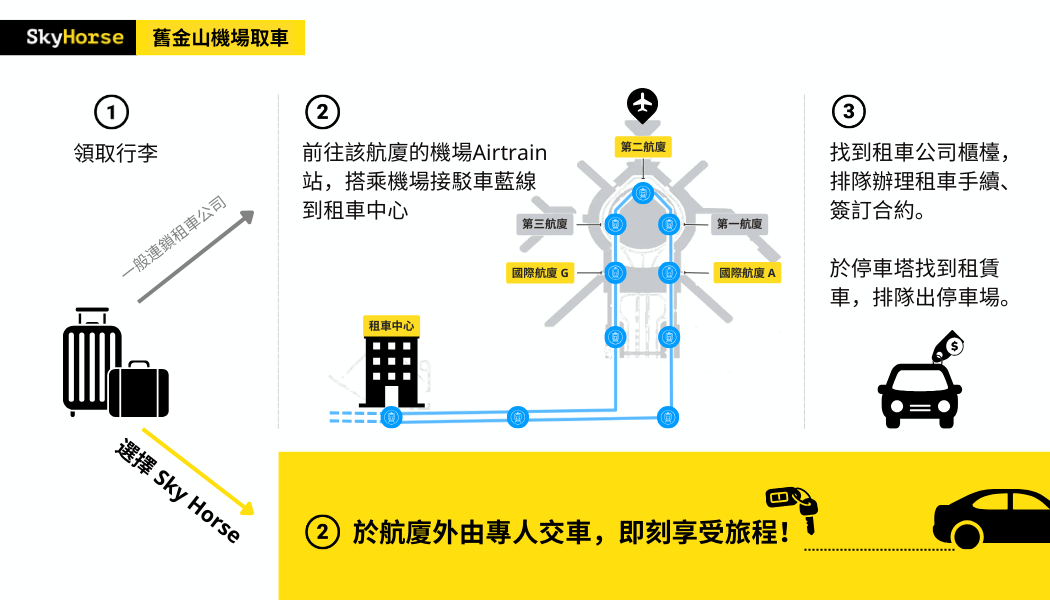
In addition to making online comparisons and bookings with reputable and transparent car rental companies, when picking up your car, don't forget to pay attention to the price of the car, the terms and conditions of the additional insurance program, and whether there are any other fees that have been added to the policy without your knowledge. Since car thefts are common in San Francisco, it is recommended to check or add additional coverage for vehicle parts such as windows and tires. For more information on rental car insurance, check out this article:U.S. car rental insurance is difficult to choose, after reading this article a hundred times more peace of mind
The most common route from the airport to downtown is US-101 Northbound (US-101 N), which takes about 25 - 35 minutes under normal conditions. San Francisco is a busy tech city with peak traffic hours of 7:00 - 10:00 a.m. and 4:00 - 7:00 p.m. You can refer to Google Maps for directions to other routes during these hours.
Driving in San Francisco
Steep Hill Driving Tips
Although today's cars are generally self-contained and have little trouble going up and down hills, many San Francisco roads have grades of more than 30 degrees, making it a bit of a trepidation for those who aren't accustomed to driving on steep inclines. Here are some practical driving tips:
- Maintain a safe distance from the vehicle in front of you by staying steadily within the speed limit.
- When starting uphill, you can use the hand brake to prevent the vehicle from sliding backwards.
- When going downhill, it can be changed to low gear to avoid continuous braking and protect the braking system.
Tips and regulations for on-street parking
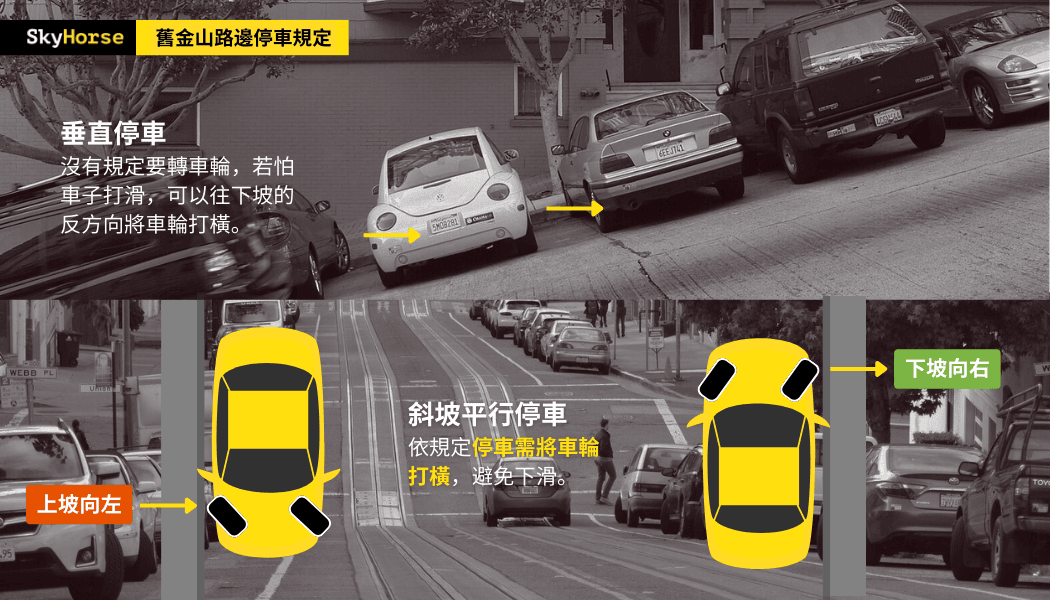
After confirming that you can park on the roadway, there are two types of on-street parking in San Francisco: parallel and perpendicular. For parallel parking, you need to turn the front wheels across the road, uphill to the center of the road, and downhill to the curb. It is best to place the wheels against the curb to avoid sliding forward or backward. If you are parked perpendicular to the road, there is no requirement to turn the wheels, but if you are afraid of skidding, you can still turn the wheels across in the opposite direction of the downhill slope. If you are parked on a flat road, you can park your car as usual, but no matter where you park your car, you must remember to turn on the "P" gear and pull the hand brake.
For more information on parking regulations in the United States, please refer to: Parking Tips in the United States.
Traffic regulations requiring special attention
- Pedestrian Priority: Compared to other cities in California, San Francisco has more pedestrians and bicyclists, and it is important to prioritize pedestrians at all times, even if they are not in a crosswalk.
- Stop Sign Intersection: Many intersections in San Francisco do not have traffic lights, but there are stop signs in all four directions, so traffic in all directions has to be suspended, so please follow the "first-come, first-served" principle to cross the intersection.
- Red light, turn right.: In San Francisco, you can make a right turn at most red light intersections, but you must come to a complete standstill at the intersection to verify safety before making the turn.
- speed limit requirement: The speed limit in downtown San Francisco is mostly under 30 mph (about 40 km/h), dropping to 20 mph on some roads, so don't speed even if there are no other vehicles on the road.
- one-way street: There are many one-way streets in downtown San Francisco, so be aware of "No Turn" and "No Entry" signs.
- Prohibition of bus-only lanes: Some sections of the roadway are designated as Transit-Only lanes, and violations may result in a ticket.
San Francisco Bridge Access Guide
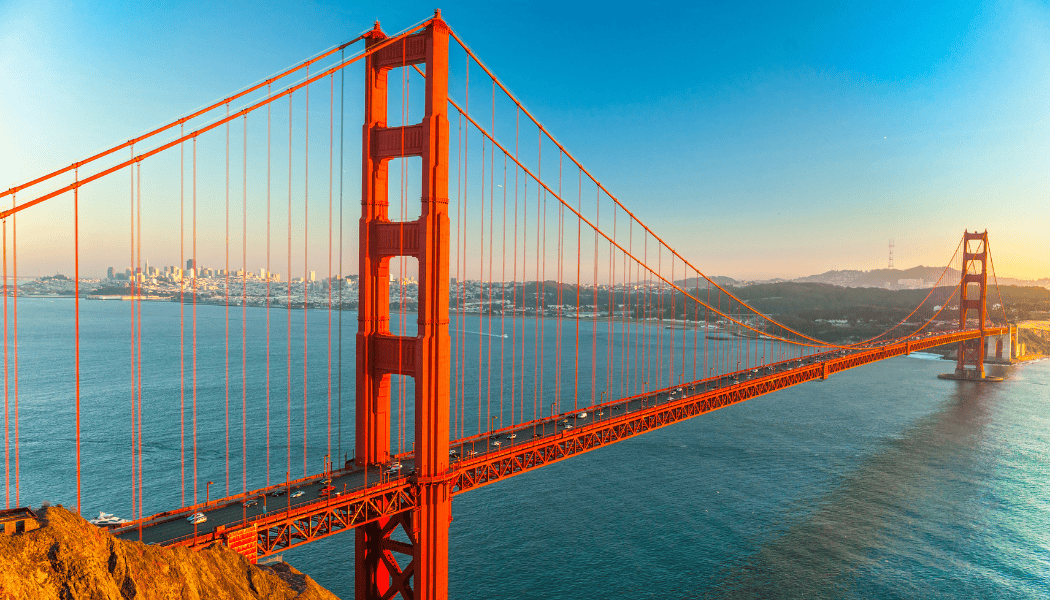
The San Francisco Bay Area is home to several important bridges that connect the city to surrounding cities, making it a major transportation hub for locals commuting to work. If you need to travel to Chiakung, visit a suburban attraction, or just want to experience driving on the famous Golden Gate Bridge, knowing the rules and tolls of these bridges can make your trip a lot smoother for travelers.
There are four bridges from San Francisco in the north to San Jose in the south.
- Golden Gate Bridge (金門大橋)
- Bay Bridge
- San Mateo Bridge
- Dumbarton Bridge
All of these bridges use a one-way toll system, where tolls are only charged in the direction of entering San Francisco, and use an electronic payment system; if you don't have FasTrak, you can use your license plate to calculate tolls and pay online. When planning your trip, choose the right bridge for your destination and pay attention to the peak hours of the weekday commute to account for potential delays caused by traffic jams.
Reminder: Renting a car from Sky Horse will give you direct access to the road without the need to pay for additional equipment. (Toll road use will be paid by the original credit card and a receipt will be sent 7-10 days after the trip, with a handling fee of US$$2 in addition to the toll fee).
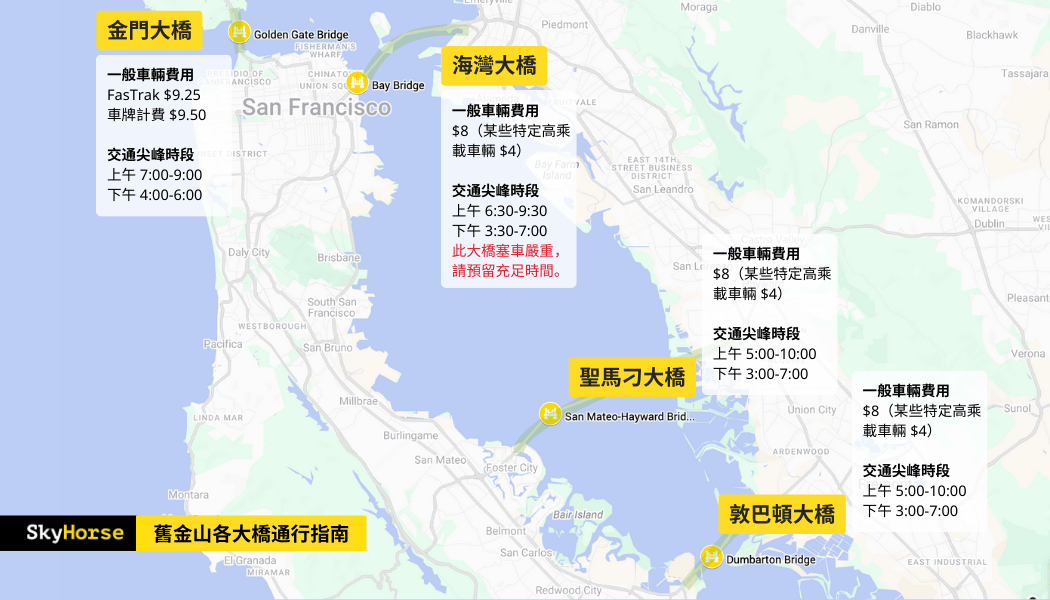
Safety Tips for Driving in San Francisco
Safety is always the number one concern when traveling in an unfamiliar city! In addition to the steep hill driving and local traffic rules and cautions that I shared earlier, the following are more safety tips for driving in San Francisco in terms of security, environment and weather conditions.
Avoid the less secure areas: the Tenderloin
The Tenderloin is a triangle in downtown San Francisco that has one of the highest crime rates and the highest number of homeless people in San Francisco. Travelers should avoid stopping, parking, or even walking through this area, especially after dark.
Choose your parking spot carefully and don't leave anything in your car.
As I mentioned earlier, car theft is very serious in San Francisco, so try to park in a parking lot that's managed by a professional, and observe the surrounding area; if there are any suspicious people, leave as soon as possible. If there is a lot of broken glass on the ground in the parking lot, it means that car thefts are especially frequent in this area, such as the popular attractions such as the Twin Peaks Pagoda and the Jiuqu Flower Street, which you need to pay more attention to. Be sure to take all your belongings with you when you get out of the car, even if it's a worthless gift, empty bag, or umbrella, don't leave them in the car and become a target for criminals.
Driving in Fog
Foggy conditions are common in San Francisco, so we recommend slowing down, keeping a safe distance, and turning on headlights or low beams to improve visibility. Don't drive with your cell phone in your hand while looking at the navigation. San Francisco has a lot of road conditions that make it easy to get into accidents, in addition to violating traffic rules.
Street Car, Cable Cars
In addition to pedestrians and bicyclists, streetcars and trolleys share some of San Francisco's roadways. If you encounter either type of vehicle while traveling, yield to and do not pass a stopped trolley or streetcar, as they have the absolute right of way. Avoid entering the path of a trolley car unless it is necessary to make a turn, and make sure it is safe to do so, as streetcars cannot dodge ordinary vehicles. Keep a safe distance when going up or down a hill. Sometimes these vehicles may brake suddenly or slide slightly backward.
Driving to Challenge the Nine Streets of Flowers (Lombard St.)
Many visitors to San Francisco will want to take on the challenge of driving down the winding Nine Streets of Flowers. Please note that Nine Streets of Flowers is a one-way street, and although there are sidewalks, you should pay special attention to tourists taking photos and keep a safe distance from the cars in front of you. Most travelers will encounter heavy traffic jams, especially during weekends, and it is said that sometimes cars will be stuck in traffic for hours. Avoid peak times such as commuting to and from work, weekends and afternoons, and taking risks during holidays and festivals. Some people who are not skilled enough to catch the distance may drive on the curb or hit the wall next to the road. If you are not confident, it is recommended that you stop your car and experience the beauty of Flower Street on foot.
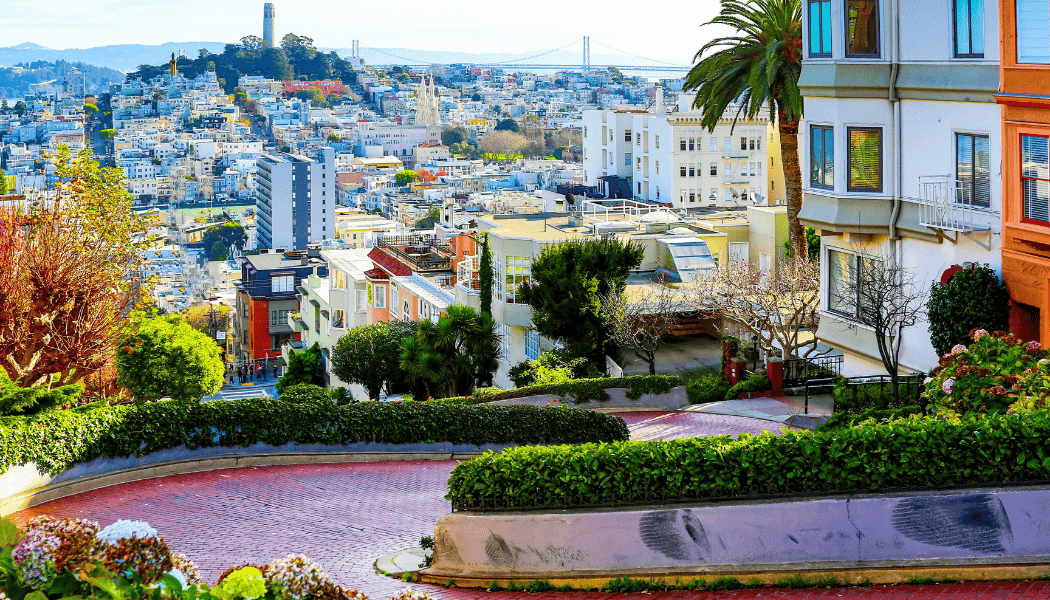
Conclusion
Renting a car and driving in San Francisco gives you the freedom to explore the city's beauty, drive over the spectacular Golden Gate Bridge, head out through the lakes and forests, or efficiently visit clients and run errands. We hope that this San Francisco car rental guide will help you feel more confident about San Francisco's steep slopes, rules and regulations, as well as improve your personal safety, so that you can enjoy your trip to California at your own pace. If you need any advice on car rental, please feel free to contact us.Ask a Sky Horse professional via LINE!If you are traveling in California, we are the best companions for you!
